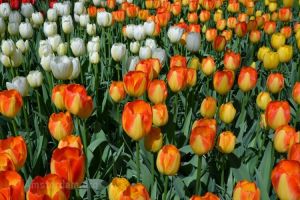Tulip Museum


In the heart of Amsterdam, near the picturesque Jordaan, you'll find the charming Tulip Museum. A perfect place for anyone fascinated by the iconic flower of the Netherlands: the tulip.
What can you expect at the Tulip Museum in Amsterdam?
- Captivating History: The museum tells the captivating story of the tulip, from its origin in the wild to the tulip mania in the Golden Age and its contemporary significance in Dutch culture.
- Unique Exhibitions: Explore the diverse and colorful world of tulips through interactive exhibitions, historical documents, and beautiful photography.
- Educational Experience: Learn all about the cultivation, trade, and breeding of tulips, and how this flower has become such an important symbol of the Netherlands.
- Tulips from Different Periods: Admire a collection of tulip varieties from around the world and various historical periods.
- Unique Attractions: Top attractions at the Tulip Museum include:
- The 'Tulip Mania' exhibition, highlighting the insane period in the 17th century when tulip bulbs were worth more than gold.
- A beautiful collection of antique tulip vases, specially designed to showcase tulips optimally.
- Interactive displays illustrating the journey of the tulip from Turkey to the Netherlands.
- Seasonal exhibitions showcasing the latest trends and developments in tulip cultivation.
Discover the fascinating world of tulips
The Tulip Museum is a must-see for flower enthusiasts, offering a unique glimpse into an important piece of Dutch history and culture.
Furthermore Tulip Museum is near the following sights: Anne Frank House (±175 m), Westerkerk (±200 m), Multatuli Museum (±450 m), Erotic Museum (±550 m) & Nieuwe Kerk (New Church) (±550 m).
For information
Prinsengracht 112, Amsterdam
tel. +31 204 210 095
web. Website
